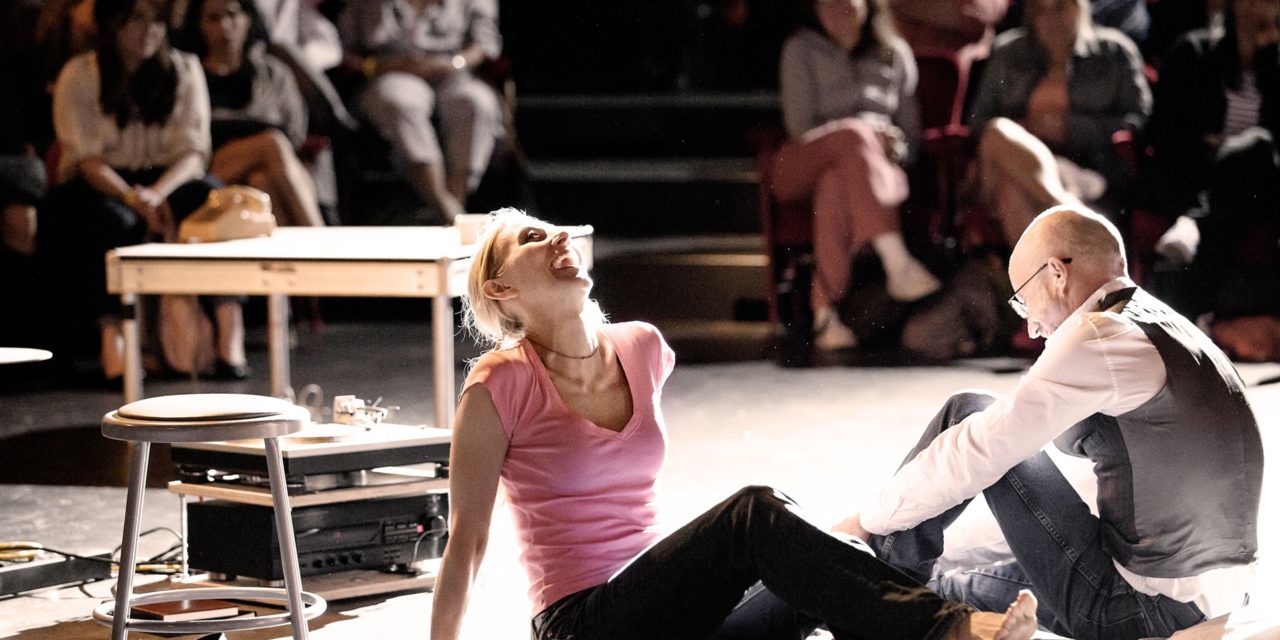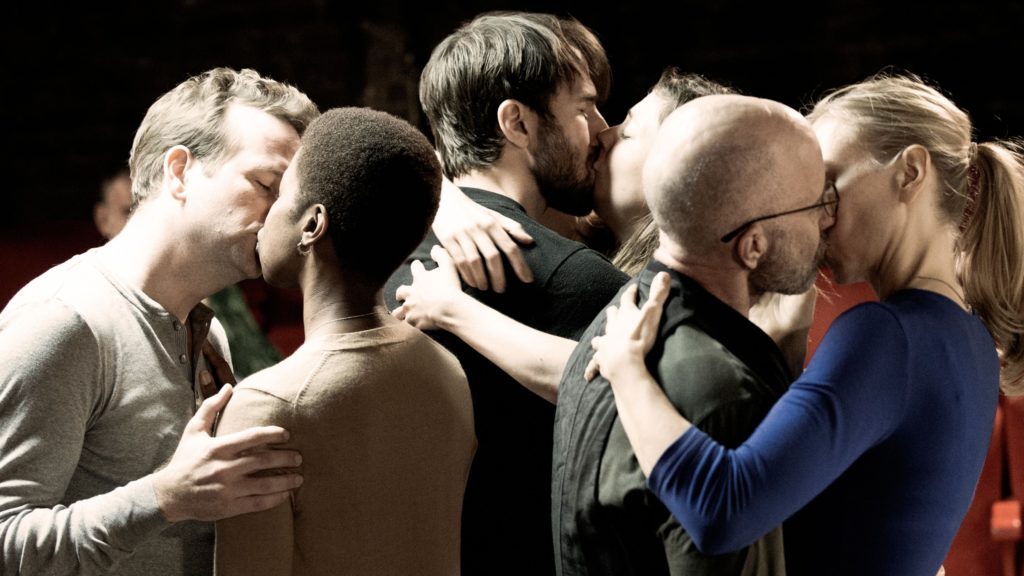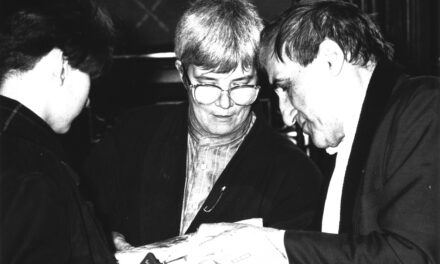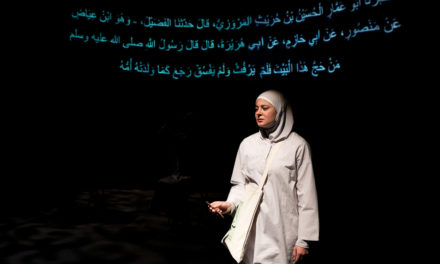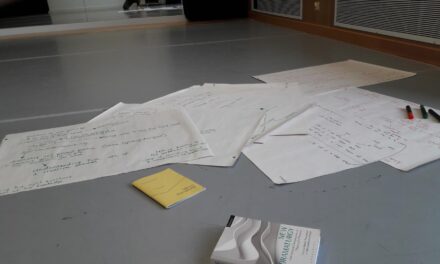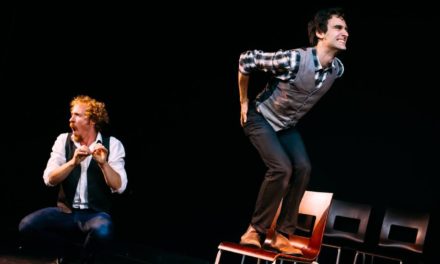Intimacy burns. A couple pummels each other in an endlessly repetitive cycle from which there is no hope of escape. This never-ending sequence reveals itself as marriage, which encompasses the cacophony of intertwined daily conversations, hanky-panky moaning, exclamations and vicious cursing. The couple creates an airtight jar – oh, I mean a home. When this hermetic world grows unbearably crowded and suffocating, their most precious familial palace insidiously metamorphoses into an enclosed crucible where violence simmers – a battlefield on which the two lovers, Johan and Marianne, destroy each other. In this adaptation of Ingmar Bergman’s Scenes from a Marriage, which premiered at New York Theatre Workshop in 2014, Ivo van Hove reconstructs the film script as a delicate palimpsest on which the past, present, and future strive to overwrite each other, to no avail. Mr.van Hove, an unusually sensational director-star from Amsterdam, has messed around with familiar dramatic texts including American ones, such as Roman Tragedies, The Little Foxes, A Streetcar Named Desire, Hedda Gabler, Antigone, A View from the Bridge, and The Crucible, among others. He is acclaimed for his fresh and bold interpretations of the American canon, which naturally has stirred equal amounts of controversy and criticism.
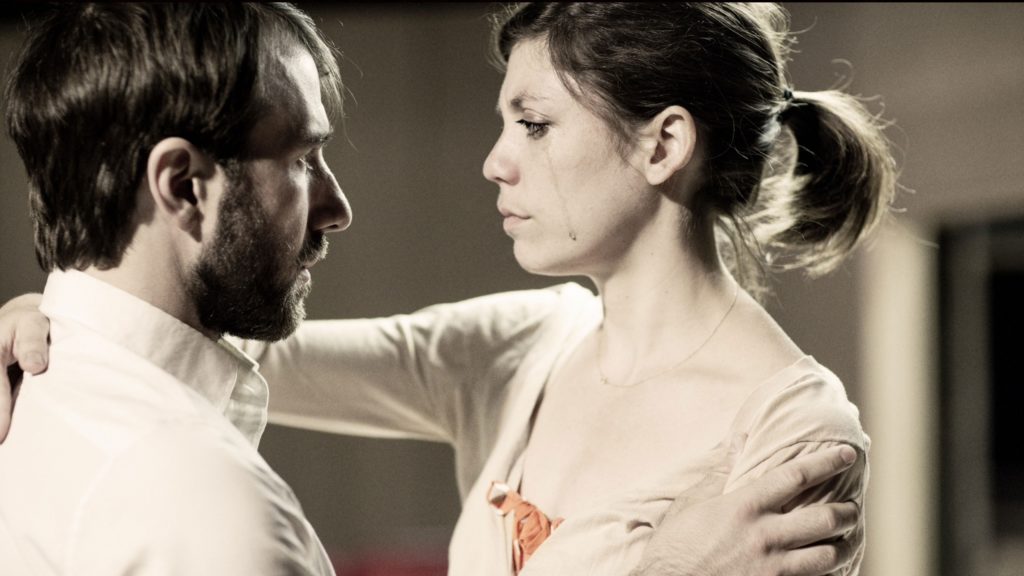
Scenes from a Marriage. Courtesy of NYTW
In Scenes from a Marriage, Mr. van Hove breaks the linearity of the original script and reconfigures the house as three small intimate rooms, forming a circle. A kitchen, surrounded by the rooms, functions as a space shared by all three of them. The audience is divided into three groups and distributed into different rooms. Johan and Marianne are each played by three different actors. Each room, occupied by a pair of the couple, presents an event from a different time in their marriage. All the scenes begin and end almost simultaneously. When the scene in front of you ends, an actor ushers you into another room, and the scenes in all three rooms begin all over again. Instead of actors coming to you, you are physically moving as an audience to intrude on a different time and space, witnessing and hearing another slice of their marriage. The process repeats itself again so that all the audience members complete the circle and peek into all three scenes. This theatrical mechanism, carefully crafted by sonorous dramaturgy, brilliantly dramatizes the absurdity of marriage. Couples talk, argue, laugh, cry, whine, berate and curse about the same topics just like a well-rehearsed, timeless and hackneyed melodrama which has been performed every night for centuries.
Inevitably, the couple can’t avoid sinking slowly into the quicksand haunted by the voices from their past and predictable sounds and words. Mr. van Hove turns up the volume on marriage’s noises and shibboleths to its loudest. Not long after the show begins, sounds of shouting, laughing, moaning, whispering and bellowing from other times and places begin to penetrate the walls and reverberate across the whole theatre. At first, the voices traverse into the room subtly and jarringly, distracting the audience’s attention from the action unfolding before them. But soon the audience is captivated by their quirkiness and eager to know what is going on behind the walls, and what the other two groups are experiencing at the same time. After moving to the next room, the audience hears the familiar conversations and sounds from the scene they just saw, hounding not only us but also the couple no matter where they/we go. Sometimes the sounds yield a somewhat naturalistic effect as if we were eavesdropping on the conversations of neighbours, yet their significance far exceeds that.
Not all the sounds and words travel through the obstacles to our ears. Only those highlighted or loud enough have the privilege of being heard. The other small talk is mostly rendered inaudible and muffled, motivating the audience to listen more carefully. The sounds from other rooms are fragmented, distant and spontaneous as if the voices are from the deepest memory, triggered by a word, a gesture or a familiar countenance. For example, while Johan explodes emotionally, accusing Marianne of never giving him true freedom and always involving her mother in their decision-making, we hear distantly not only a similar (albeit calmer) fight about her mother but also their laughter with friends. Coincidentally, a present discussion prompts the distorted sounds from various situations in the past or future. One memory is always conflated with another. With the help of the auditory architecture, designed by Jan Versweyveld, the spontaneity and immediacy of the intruding voices create a non-linear, intimate paradigm for the audience to catch an in-depth glimpse into the love span and the impending suffocation and separation. I call this sonorous effect “palimpsestic echoing,” which deepens characters’ complexities and theatricalizes the hidden voices from characters’ minds. It enables us to hear the threads of memories drifting in and out of their unconscious. A sweet, loving laughter flows in when the callous break-up scene howls. A painful scream invades tumultuously, an augury to the lovemaking couple. The ache in the marriage manifests itself via the interwoven compositions of the bittersweet symphony. The sonification of the theatre space opens up a new auditory realm where audience and characters can venture through time and space more effortlessly and organically.
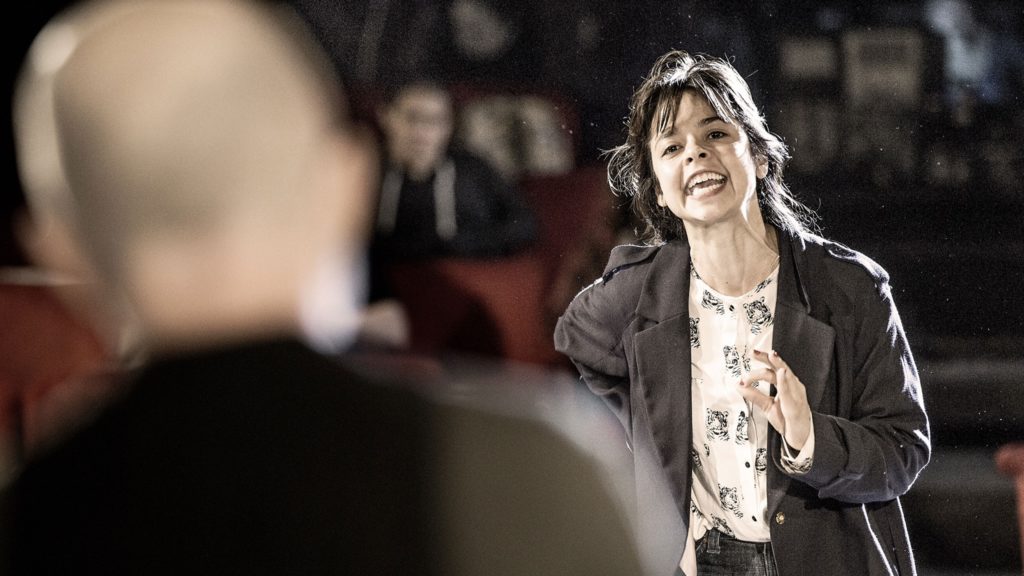
Scenes from a Marriage. Courtesy of NYTW
Mr. van Hove further strengthens this palimpsestic effect visually. The interior kitchen permits partial transparency through windows. The audience can thus spy on the characters voyeuristically. Mr. van Hove capitalizes his stage design and yields some astonishing images. For example, at the end of one scene, where Johan anxiously asks Marianne if she will fall in love with others, followed by a long kiss between them, the audience catches sight of the future, Johan, leaving Marianne after confessing his affair, followed by Marianne walking across the kitchen and begging him to stay. Two contrasting scenes coalesce centripetally.
The second half of the production is not as interesting as the first. In Act II, the division of rooms is eradicated, and the house becomes an amphitheatre. All three pairs of Johan and Marianne now can see, speak and interact with each other. Yet the result looks more like a rehearsal exercise than a well-crafted scheme, and the nuanced reverberation of travelling sounds evaporates. That said, the production is a daring, innovative experimentation in sonic architecture and how it can powerfully enrich the text dramaturgically. The production team employs a seemingly simple idea which, in fact, requires meticulous logistics and planning. Its effects profoundly retell the story of Scenes from a Marriage, elevating the linear love story to an intricate, palimpsestic discourse between fragmented voices of memory, of unconsciousness, of love.
This post was written by the author in their personal capacity.The opinions expressed in this article are the author’s own and do not reflect the view of The Theatre Times, their staff or collaborators.
This post was written by Kai-Chieh Tu.
The views expressed here belong to the author and do not necessarily reflect our views and opinions.

